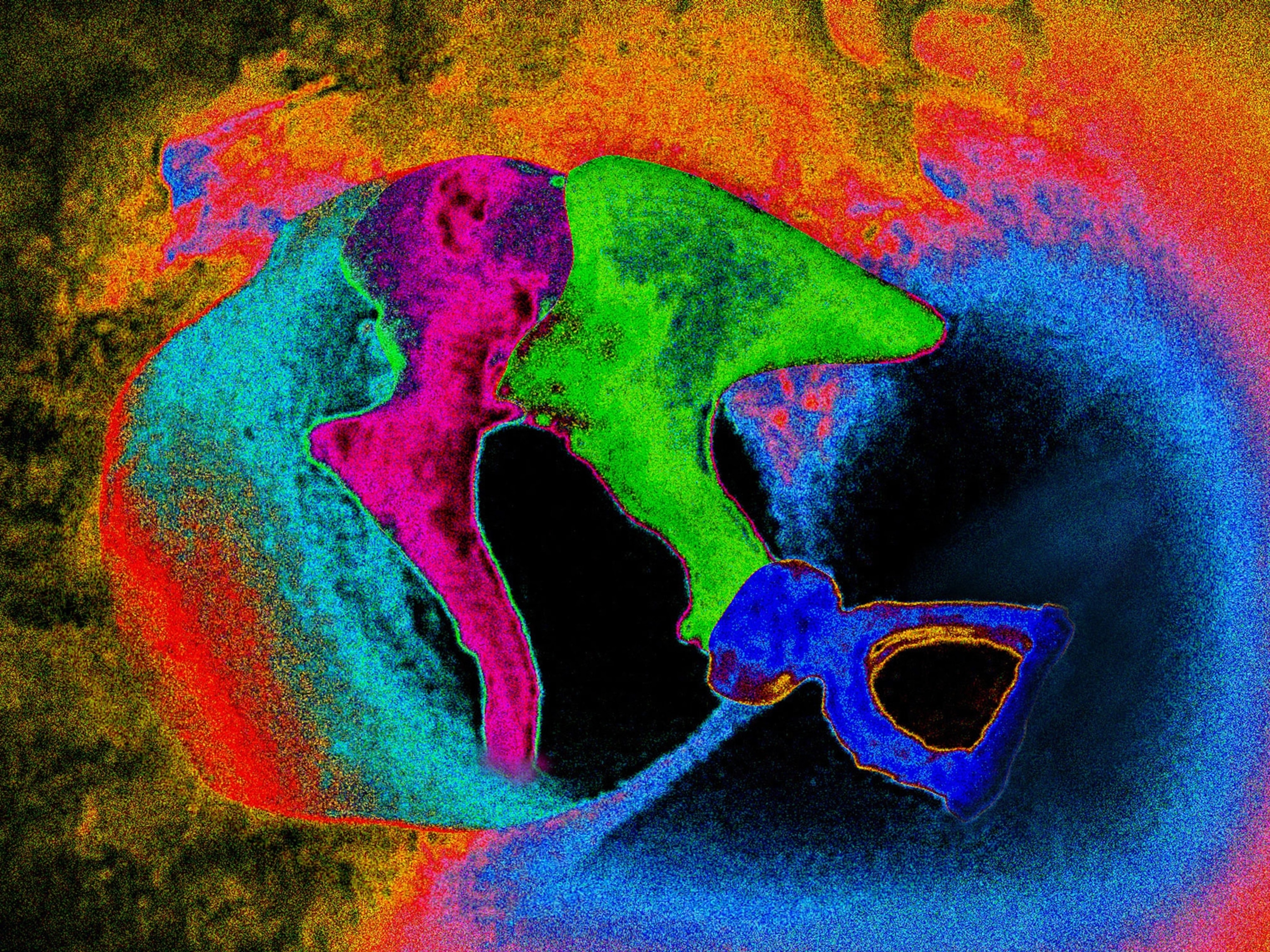
Mount Everest is more than two feet taller, China and Nepal announce
Based on parallel surveys conducted by the two countries, the new height measurement has been accepted for use by the National Geographic Society.
The highest point on Earth has a newly announced elevation. Mount Everest is 29,031.69 feet above sea level, according to survey results presented today. That is more than two feet higher than the altitude previously recognized by the government of Nepal.
The elevation, which was announced on December 8 in a joint statement by the Survey Department of Nepal and Chinese authorities, is the culmination of a multiyear project to definitively measure the legendary mountain. As the first serious survey of Everest in 16 years, the effort has been closely followed by the geographic community—particularly scientists analyzing how a devastating 7.8 magnitude earthquake in 2015 affected the region. (Find out why Mount Everest changes height.)
Last spring a small group of Nepalese surveyors and guides endured the biting cold of a nighttime ascent, reaching the top at 3 a.m. local time so they could conduct their work unimpeded by crowds of recreational climbers, to try to settle the matter. (Find out exactly how the teams made their measurements, and the challenges they faced during the expedition.)
“We want to deliver the message that we can do something with our own [country’s] resources and technical manpower,” Khimlal Gautam, chief survey officer for the project, told National Geographic last year.
Technological peaks
In 1856, mathematician Radhanath Sickdhar found that Everest is the highest mountain in the world while he was working for the Great Trigonometrical Survey, a project dedicated to surveying and mapping the Indian subcontinent. Since then, a handful of surveys have sought to pin down the mountain’s true height with the best technology available at the time.
Until the advent of satellites, surveyors used a device called a theodolite, a precision optical instrument mounted on a tripod, for measuring angles between two designated points. Lugging their heavy equipment from hilltop to hilltop, a survey team would incrementally measure Everest’s height from sea level, zig-zagging north from the Bay of Bengal until they could see the peak.
A 1954 survey using a similar technique calculated that Everest stands at 29,028 feet above sea level, a number that is still recognized by many countries and map publishers.
Then in 1999 a survey led by cartographer and explorer Bradford Washburn, and sponsored by the National Geographic Society, was the first to use GPS technology to measure the Everest summit. That team’s work delivered an altitude of 29,035 feet.
On February 9, the Society announced it will adopt the latest measurement, which includes the snow and ice cover at the summit, as Mount Everest’s official height. The figure will be used in all publications and re-publications going forward, including National Geographic-branded maps and atlases.
“Is it always going to be the perfect number? No,” says Alex Tait, the geographer of the National Geographic Society. “But it’s a good number,” he adds, emphasizing the carefulness in how the latest measurement was taken.
Mounting excitement
To make their new survey as complete as possible, the Nepalese team decided to employ both previous techniques. On May 22, 2019, Gautam summited Everest with four teammates and deployed a GPS receiver, along with ground-penetrating radar to measure the depth of the snow piled on top of the rock. Meanwhile, teams of surveyors waited at eight sites with views of Everest’s summit to fix its elevation at sunrise, when the atmosphere is most clear, with modern laser theodolites.
But after the Survey Department of Nepal completed its field work last year, the project became mired in international politics. During Chinese President Xi Jinping’s state visit to Nepal in October 2019, officials announced that the two countries would cooperate in re-surveying the mountain, delaying the revelation of the new height. A team of Chinese surveyors were at work on the north side of the mountain this spring measuring the summit using China’s network of Beidou satellites, a rival to the GPS system.
Now that the results have been announced, representatives from both countries expressed extreme confidence in the new altitudes. But Gautam is quick to point out that no matter how accurate, every survey comes with some margin for error. “In survey mapping, we can’t find the exact point or altitude,” he says. “We’re trying to find the MPV: most probable value.”
You May Also Like
Go Further
Animals
- Octopuses have a lot of secrets. Can you guess 8 of them?
- Animals
- Feature
Octopuses have a lot of secrets. Can you guess 8 of them? - This biologist and her rescue dog help protect bears in the AndesThis biologist and her rescue dog help protect bears in the Andes
- An octopus invited this writer into her tank—and her secret worldAn octopus invited this writer into her tank—and her secret world
- Peace-loving bonobos are more aggressive than we thoughtPeace-loving bonobos are more aggressive than we thought
Environment
- Listen to 30 years of climate change transformed into haunting musicListen to 30 years of climate change transformed into haunting music
- This ancient society tried to stop El Niño—with child sacrificeThis ancient society tried to stop El Niño—with child sacrifice
- U.S. plans to clean its drinking water. What does that mean?U.S. plans to clean its drinking water. What does that mean?
- Food systems: supporting the triangle of food security, Video Story
- Paid Content
Food systems: supporting the triangle of food security - Will we ever solve the mystery of the Mima mounds?Will we ever solve the mystery of the Mima mounds?
History & Culture
- Strange clues in a Maya temple reveal a fiery political dramaStrange clues in a Maya temple reveal a fiery political drama
- How technology is revealing secrets in these ancient scrollsHow technology is revealing secrets in these ancient scrolls
- Pilgrimages aren’t just spiritual anymore. They’re a workout.Pilgrimages aren’t just spiritual anymore. They’re a workout.
- This ancient society tried to stop El Niño—with child sacrificeThis ancient society tried to stop El Niño—with child sacrifice
- This ancient cure was just revived in a lab. Does it work?This ancient cure was just revived in a lab. Does it work?
Science
- The unexpected health benefits of Ozempic and MounjaroThe unexpected health benefits of Ozempic and Mounjaro
- Do you have an inner monologue? Here’s what it reveals about you.Do you have an inner monologue? Here’s what it reveals about you.
- Jupiter’s volcanic moon Io has been erupting for billions of yearsJupiter’s volcanic moon Io has been erupting for billions of years
- This 80-foot-long sea monster was the killer whale of its timeThis 80-foot-long sea monster was the killer whale of its time
Travel
- How to plan an epic summer trip to a national parkHow to plan an epic summer trip to a national park
- This town is the Alps' first European Capital of CultureThis town is the Alps' first European Capital of Culture
- This royal city lies in the shadow of Kuala LumpurThis royal city lies in the shadow of Kuala Lumpur
- This author tells the story of crypto-trading Mongolian nomadsThis author tells the story of crypto-trading Mongolian nomads




